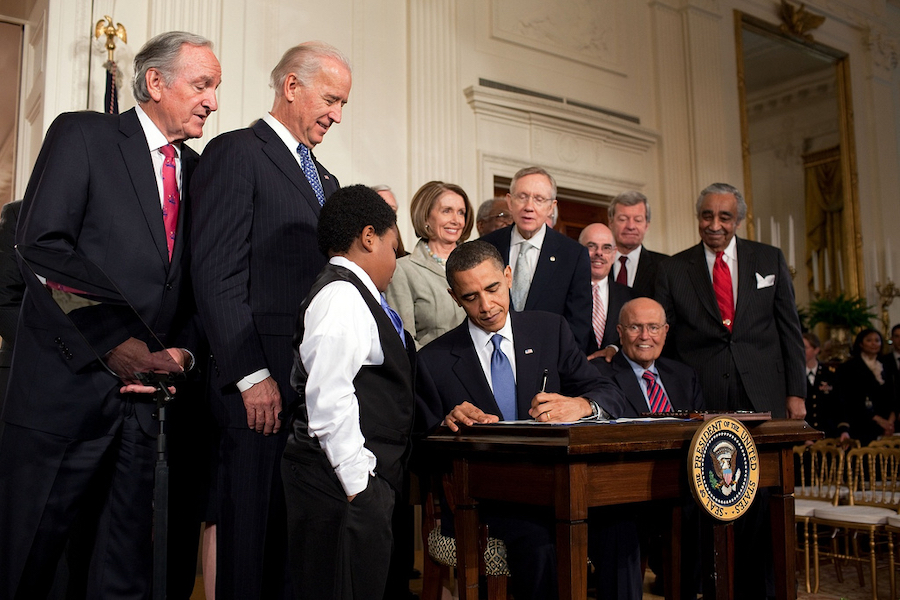
Health
Healthcare Math: Is it time for a Paradigm Shift?
Healthcare costs are on the rise, making the case for all political ideologies to tackle the healthcare dilemmas. But it seems like the debate is stuck on the same issues over and over again when all sides have to give up and surrender important and crucial elements over to the other side. Per the World Bank report and CMS, US healthcare costs were 17.8 percent of GDP in 2015, vs. less than 10 percent of GDP as the world average. The UK for example spends about 11 percent of its GDP on healthcare. Is it time for a paradigm shift? The answer may be somewhere in the details and numbers.
There are two types of paradigms about healthcare, the first being the drivers for rising costs, the latter being how and who should pay for it.
The rise in healthcare costs is due to these main paradigms:
Management and overhead costs: Insurance companies and medical providers are caught in classic game theory dilemmas which becomes costlier over time.
Medical innovation and advanced care: It’s humanity’s fundamental interest that the medical field will keep finding new treatments to extend life and improve quality of life.
Indirect expenses: Patients’ expectations for comfort and indirect medical care that require more real-estate and staff than needed for the direct medical treatment.
The way the current healthcare system is structured, it seems highly unlikely that any major significant cuts to cost could be achieved. In fact, according to CMS healthcare costs are expected to rise at a rate of 5.6 percent per year between the years 2016-2025.
The second type of paradigm that tackles the ‘who and how’ to pay for healthcare is based on the late 1940s connection of medical benefits to the workplace, and the establishment of private providers and insurers to fill that need. The 2015 CMS national health expenditures report showed that private insurance provides 33 percent of overall funding for medical expenditures out of the $3.2 trillion overall costs. 11 percent of the funding is attributed to the public’s out of pocket spending. The remaining 56 percent is split between a 27 percent direct government cost for Medicare and Medicaid, other sources of funding which are partly government costs, private or out of pocket and investment.
In 2012, the Agency for Healthcare Research and Quality published its finding that in 2008 and 2009, 50 percent of all healthcare costs were spent on 5 percent of the overall population with the costliest medical expenses. That means that 95 percent of the population makes up for only 50 percent of the overall cost. The paradigm has always been that the healthy young population covers the costs for the less fortunate 5 percent and the elderly. That’s the rationale behind any insurance logic that a large pool of insured individuals will generate enough revenue to cover for the entire pool’s expenses.
Other advanced modern countries, like the European countries have a social based healthcare system. One can debate at length the pros and cons for such a system vs. the insurance companies and private structure in the US, but the debate will be futile. The current system that is already in place is too big to fail. The private insurance companies and medical entities are enormous, and have become too big to fail. They have strong lobbies, tens of millions of employees and if you think that the 2008 financial crisis was big, just imagine the crash of an entire private healthcare system.
But let’s just suppose that the expenses pie is sliced in a different way. Let’s assume that the insurance companies will take care of 95 percent of the insured population and the government will take care of 5 percent of the population with the highest costs. The logic behind supporting the costliest population by the government is as follows:
- Individuals whether insured, underinsured or uninsured should not die in the most advanced country in the world because of their prior choices or ability to pay.
- Minimal insurance premium costs for 95 percent of insured individuals, promoting more participation in the insurance pools.
- Less risk for the insurance companies should reduce premium prices. Their product will become more of a standard product such as other insurance products promoting free market competition to reduce prices.
- Insurance companies and medical providers will reduce overhead costs, since they will have less conflicts of interest for paying for costly treatment and medication.
- The government won’t have to establish an enormous system to take care of 5 percent of the population since although it’s costly, it’s still a small percent of the population.
To make sure that individuals who wish to base their healthcare only on private insurance regardless of their medical condition, insurance companies will always be able to offer supplementary products to make sure that these individuals will have the option of private care even if they “cross the line” to the 5 percent most costly population. However, their choice should not affect the cost of healthcare insurance for the rest of the population.
As for the uninsured population that doesn’t meet the 5 percent most costly criteria, heavy penalties should be imposed on those who don’t purchase insurance, leaving them with very little care. Just like in some states a driver is not allowed to drive if he hasn’t purchased some form of insurance, the same should be the case for basic health insurance. Additional benefits will be taken away from individuals who don’t purchase the newly considerably lower premium insurance plan.
This proposed paradigm shift is not without its flaws. The private – government hybrid system is a complicated creature and government entities are notorious for bureaucracy and complicated procedures. Individuals might not understand the private – government partnership for healthcare which might drive the insured individuals’ figures down for the first few years, misunderstanding that the government will only take care of the costliest conditions, not necessarily the life-threatening ones.
The need for paradigm shifts for healthcare is eminent. The expected yearly rise in costs and the pressure hard working individuals are experiencing with rising premiums and out of pocket costs will only get worse. The current healthcare system is already in place and is too big to fail, but fundamental changes should be made to drive down indirect medical costs and insurance premiums.

